Creating a Kubernetes ReplicaSet: A Step-by-Step Guide
 Rohit Deore
Rohit Deore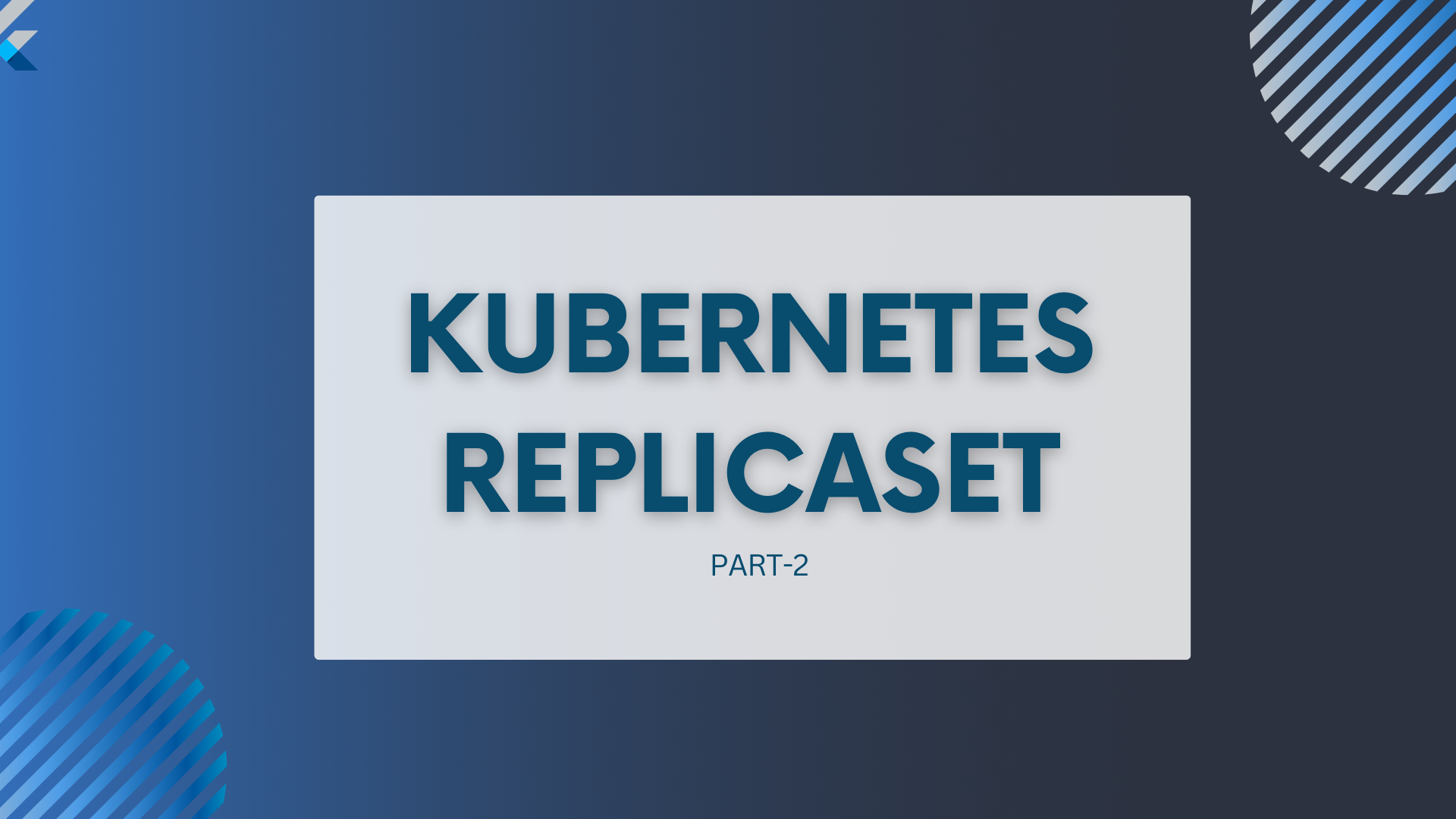
Kubernetes ReplicaSets are powerful tools for ensuring the availability and scalability of your applications. In this guide, we'll walk through the process of creating a ReplicaSet in Kubernetes.
What is a ReplicaSet?
A ReplicaSet is a Kubernetes controller that ensures a specified number of identical Pods are running at all times. It helps in maintaining the desired state of your application, automatically replacing any Pods that fail or are terminated.
Prerequisites
Before we begin, make sure you have the following:
A running Kubernetes cluster.
kubectlcommand-line tool installed and configured to communicate with your cluster.👉🏻 https://kubernetes.io/docs/tasks/tools/install-kubectl-linux/
Creating a ReplicaSet YAML File
Here's an example of a basic ReplicaSet YAML configuration:
apiVersion: apps/v1
kind: ReplicaSet
metadata:
name: my-replicaset
spec:
replicas: 3
selector:
matchLabels:
app: my-app
template:
metadata:
labels:
app: my-app
spec:
containers:
- name: my-container
image: my-image:latest
This YAML file specifies a ReplicaSet named my-replicaset with three replicas. It uses a Pod template to create Pods with a label app: my-app.
Save the YAML configuration in a file (e.g., my-replicaset.yaml)
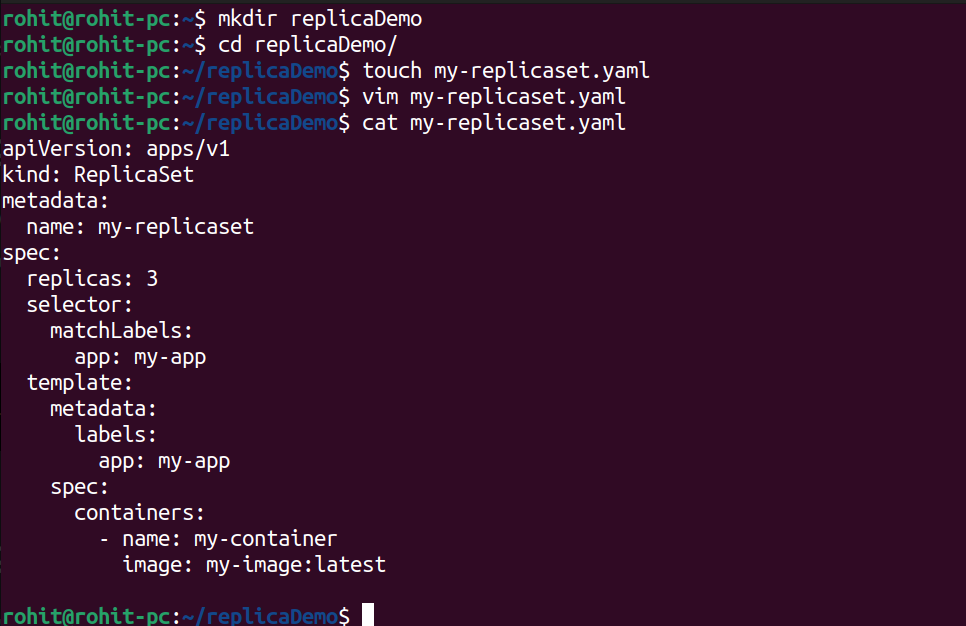
Applying the YAML Configuration
Now apply it to your cluster using the following command:
kubectl apply -f my-replicaset.yaml
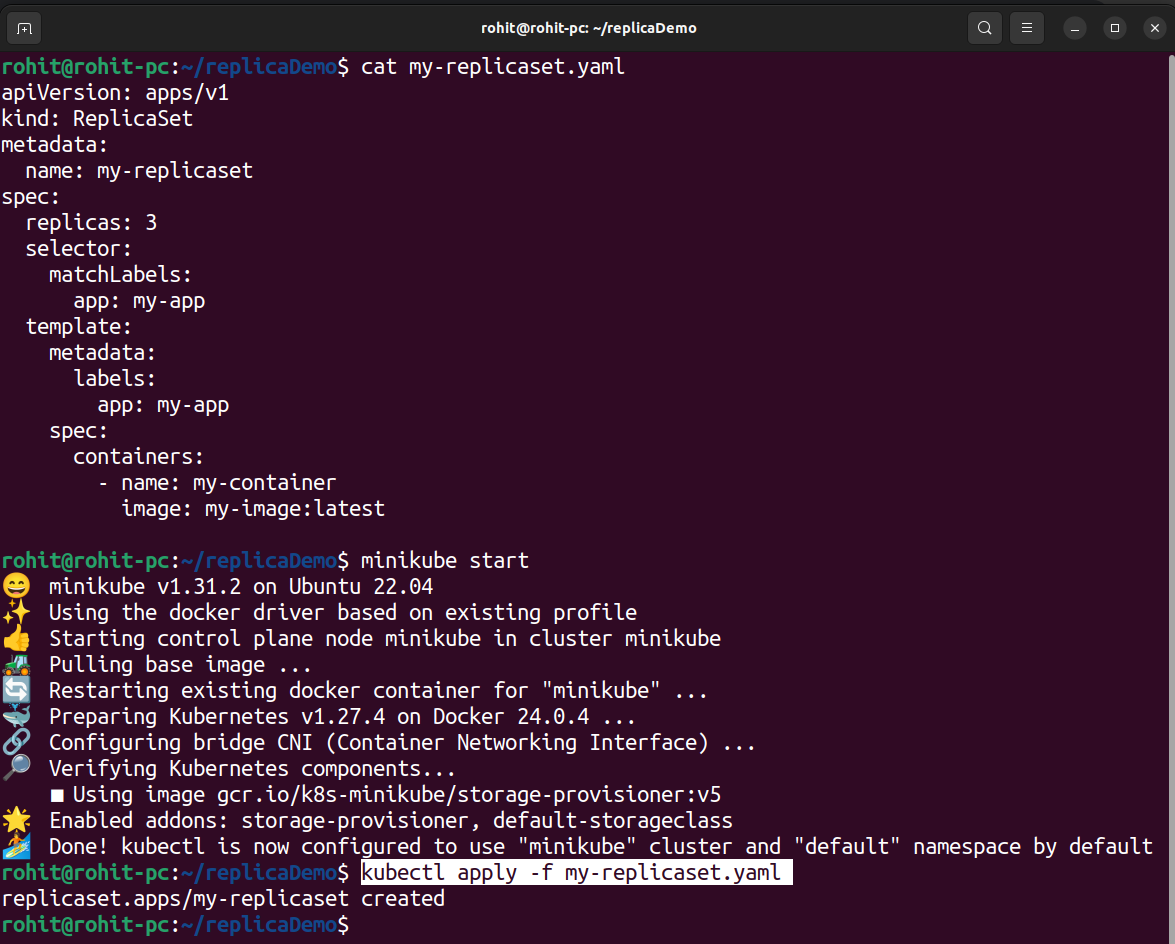
Verifying the ReplicaSet
You can verify that the ReplicaSet and associated Pods have been created using:
kubectl get replicaset
kubectl get pods
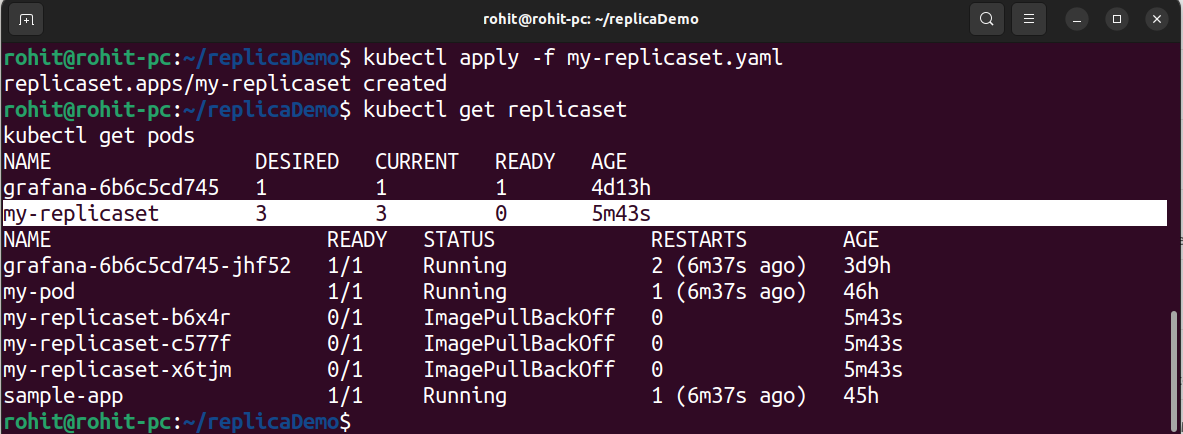
Scaling the ReplicaSet
To scale the ReplicaSet, you can use the following command:
kubectl scale replicaset my-replicaset --replicas=5
This command scales the ReplicaSet named my-replicaset to have five replicas.
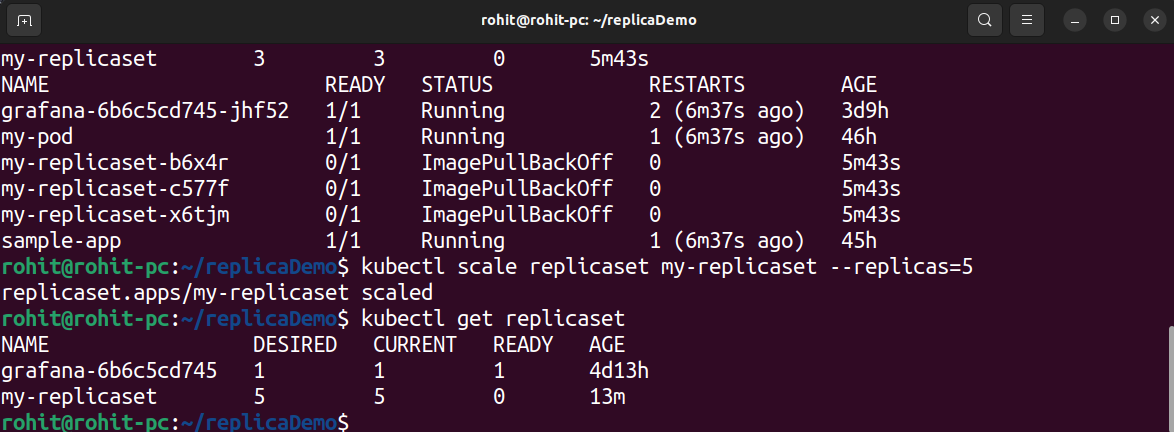
Now you can see that replicas are updated from 3 to 5
Updating the ReplicaSet
To update the ReplicaSet with a new image or configuration, edit the YAML file and reapply it using kubectl apply.
Deleting the ReplicaSet
If you want to delete the ReplicaSet, you can use:
kubectl delete replicaset my-replicaset

This will also delete the associated Pods.
Congratulations! You've successfully created and managed a ReplicaSet in Kubernetes. 🚀This powerful feature ensures your applications remain available and scalable in a dynamic environment.
👉🏻Read more on Kubernetes ReplicaSet on the Kubernetes official website
Thank you for joining me on this journey through creating a Kubernetes ReplicaSet. We hope you found this guide helpful in utilizing the power of ReplicaSets for your applications. If you have any questions or feedback, feel free to leave a comment below.
Keep Exploring...
Subscribe to my newsletter
Read articles from Rohit Deore directly inside your inbox. Subscribe to the newsletter, and don't miss out.
Written by

Rohit Deore
Rohit Deore
Student and Developer